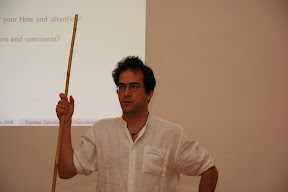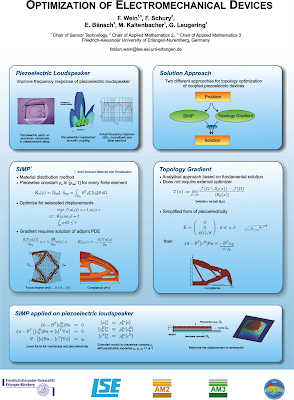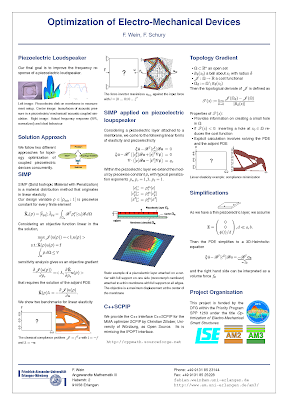This is the summer of work! After finishing the work on my paper, and a couple of presentations I gave (see the last two postings), I was looking forward to this summer.
Personally to spend time with my (almost two years old) doughter in the garden but also to actually code and test ideas before the writing time starts again. I four weeks I need a paper and a poster, then two presentations for the two following weekends. In November there are two important reports ... So concentrate on actually working now :)
The two chairs I'm working are almost deserted - a productive working atmosphere. Even the student working on his diploma thesis about topology optimization of an energy harvester (I "share" him with a colleague) is on holiday.
But now to the subject: One of my collaegues, Simon, is currently porting our finite element software to his MacBook. He's absolutely the right guy for this job - a really skilled hacker - and it took him just about two days. That's really respectably considering the complexity of our C++ monster with all the external libraries!
Well, as we all work on the same piece of code in the end (thanks a lot to the subversion team!), there is now a finite element code existing (unequals available!) on the Mac that shall be difficult to match (at least on OS-X). And this might be even more true for topology optimization (and all the other specialities my collegues are working on). :)
That doesn't really help anyone, is by no means an academic progress - but on the other hand this might be only possible in an academic environment. And the
flying spaghetti monster alone might know which potentials this will have in the future. Simon's previous work to port our code to different plattforms released us from our Makefile hell and brought us a clean cmake based structure. As a result we can have debug-code and (ten times faster) release code concurrently and can now compile the whole code monster within 2 minutes (icecream cluster compilations thanks to Simon) instead of 20+ minutes.
While I'm often frustrated that I code my optimization algorithms not based on a clone of Ole Sigmuns's 99-line MATLAB code but in our FEM code where I sometimes need a week instead of an hour - then this are the things that make me prefer the C++ version, to code together with colleagues! (And I started recently to do more coding in Octave (a GNU MATLAB clone) anyway)





